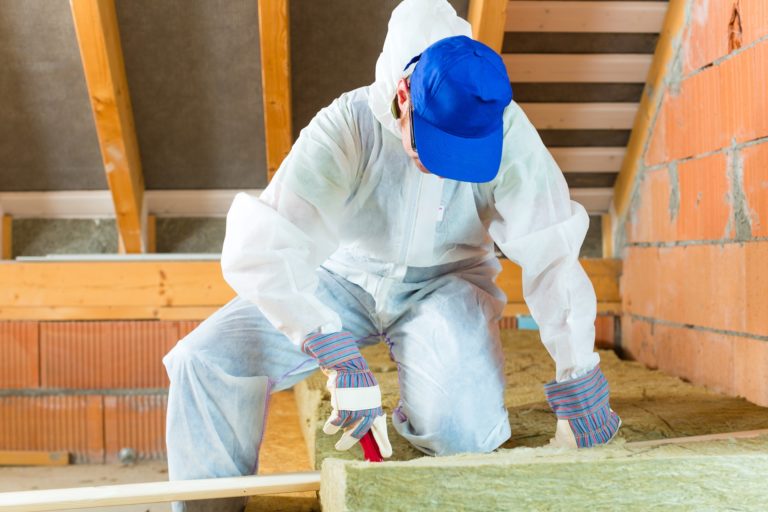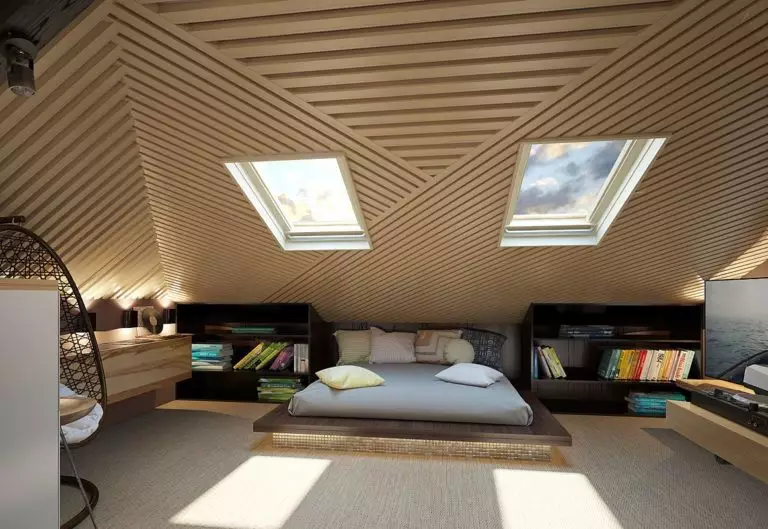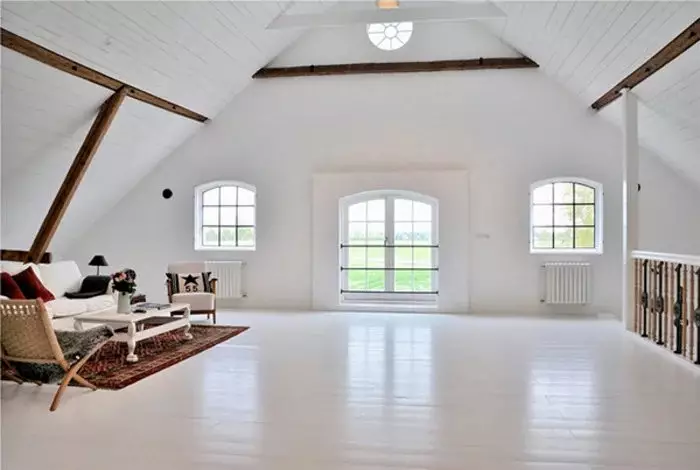
The house loses a large amount of heat through the uninsulated attic. As a result, the temperature in the room does not increase, and utility costs are rising. The only way out is to insulate the cold attic with specific materials. If there are time and extra money, it is possible to cover the roof, but this is not essential. It is enough to isolate the ceiling, and all the heat remains in the room.
Why insulate the attic?
A cold roof is a budget and practical option for constructing the roof of a house. This design significantly saves costs but does not contribute to heat conservation.
Solving the matter of thermal insulation of the ceiling zone is desirable at the stage of building a house. However, insulation is frequently resorted to in an operating room.
The warm air of the heated room rises and, in contact with the cold ceiling, quickly cools. The loss of thermal energy through an insulated attic reaches 25-40%.
Thermal insulation of the attic solves several tasks:
Insulation of the attic increases the comfort of a private house and optimizes the microclimate of the room. Subject to installation technology, thermal insulation eliminates the presence of condensate on structural elements.
Materials for thermal insulation of the attic
The selection of installation method defines the list of possible options for heat insulators. When insulated by the attic, the range of materials is much broader – from natural compounds to technologically advanced solutions. Installation inside the room imposes several restrictions.
Regardless of the method of placement, the insulation for the ceiling system must have low thermal conductivity. The coefficient determines the capacity of the insulator to transfer energy from heated elements to cold. The more moderate the thermal conductivity, the better the material retains heat.
An important parameter of choice is moisture resistance. The ability of the material to maintain physical characteristics in a humid environment is critical when insulating from the attic when the roofing has worn out enough.
Among the additional requirements can be identified:
It is crucial to take into account the indicator of the vapor permeability of the insulation. But there are nuances. When a concrete slab is insulated from the attic side, steam-passing material must be used. For installation from the inside of the room, on the contrary, is vapor-proof insulation.
Mineral wool
Mineral wool or its varieties – glass wool, stone wool, slag wool – are distinguished by an increased coefficient of thermal conductivity due to the structure of randomly arranged fibers. Cold air in winter does not penetrate the room from the outside, and in summer, it is fresh in it, since the wool does not allow air flows cooled by the air conditioner.
Of all the varieties of mineral wool, the specialists recommend choosing stone wool insulation for the following reasons:
Additional advantages of stone wool insulation are the reduction of the noise level in the room, as sound waves cannot pass through the layer of air located among the fibers. At the same time, the denser the material, the smaller the air gap and the more sounds it lets through, so the insulation can be chosen with average heat conductivity and sound insulation.
Polystyrene foam
You can use polystyrene foam for attic insulation in a house with a cold roof. This material also has advantages:
Of the disadvantages:
The polystyrene foam is most often used for outdoor work. As insulation for the attic in a private house is not profitable – it requires significant investments to protect the material itself.
Insulating the ceiling with foam is more suitable to do from the inside, but this can reduce the ceiling height.
Expanded polystyrene
Expanded polystyrene is made from granules of synthetic material polystyrene or polystyrene foam. This type of insulation is a heater, which is a porous structure with separate cells. Cells do not contact each other, which, on the one hand, is a positive point, on the other – a negative quality. The fact is that polystyrene foam does not pass moisture well, it accumulates indoors, causing humidity.
The advantage of polystyrene consists in its cost and small thickness. The air inside is 98% of the total volume of the material, so it is cheap. The thermal conductivity is lower compared to stone wool. To achieve excellent thermal insulation, you have to buy expanded polystyrene of higher thickness, which costs more.
Polystyrene is flammable; therefore, in terms of fire safety, it is not a good option.
So it can not be laid next to heating appliances as the melting point is 75 degrees. In the attic, it can be a chimney.
Sprayed polyurethane foam
In terms of durability, as well as heat-preserving properties, it is worth paying attention to polyurethane foam, which is applied by spraying. In this case, there is no need to build logs for laying the material.
In a short time, you can create a solid floor in the attic, in which mouses do not settle, mold does not start, cracks do not appear. When using polyurethane foam, it is not necessary to buy additional vapor and waterproofing.
Cellulose insulation
Bulk material made from paper waste and pulp. Synthetic components are added to the eco wool, to protect it against rot and fire.
The eco wool is sprayed dry over the floor or mixed with glue. To work with, you need special equipment.
The characteristics of cellulose insulation and the technology of its application endowed the modern method of thermal insulation with several advantages:
Despite the many advantages, eco wool has not gained much popularity—the leading causes for low demand: high cost, the inability to install it yourself.
Besides, eco wool is prone to shrinkage and wrinkling. In essence, it is desirable to equip rigid support from above to move around the attic.
Thermal Insulation – Layer Thickness
To insulate a non residential attic, you can use heat-insulating materials of any density. If you plan to lay mineral wool on the roof slopes, you can use a type of material of lower density and thickness, since the ceiling insulation will be double, but in two places.
The specialists recommend a more solid layer of insulation to be placed around the perimeter of the attic since the most considerable heat loss occurs in the corners.
Preparing the attic for insulation
Before beginning work, it is necessary to calculate the area of the premises and the quantity of insulating material needed. The main concern is the thickness of the insulation. The width of the insulating material should be at least 20 cm.
After calculations:
Vapor barrier
Warm air saturated with steam always rises upward, passing through walls and ceiling. According to the laws of physics, this process is called diffusion.
Different materials have different degrees of vapor permeability. High resistance to the diffusion process can be caused by the condensation or the accumulation of moisture between floors. The floors are usually built of wood in such places, and wood, overfilled with moisture, loses its strength.
When the lower room warms up, and the upper one is cold, the vapor barrier is necessary. Using stone wool, you can buy material with a hydrophobic cover that does not let vapor into the cold room at the top, where water drops form from it.
There are two concepts in technical documentation: vapor resistance and vapor permeability coefficient. These are different concepts.
To organize a vapor barrier, you can use two materials – a film to cover the entire area and adhesive tapes to connect the layers of hydrophobic insulation so that steam does not penetrate the cracks.
When choosing the vapor barrier, you have to consider the next characteristics: strength, resistance to ultraviolet – since sunlight can sometimes get into the windows, which can damage materials.
Waterproofing
To defend the attic from flooding, and ceiling and renovations from water drips, it is recommended to lay a layer of waterproofing material on the roof slopes.
Before you buy waterproofing, you must re-read the properties. In essence, the material must allow air to pass through but retain water. Some cheap films create a greenhouse effect in a cold, unheated attic, letting the walls become moldy.


